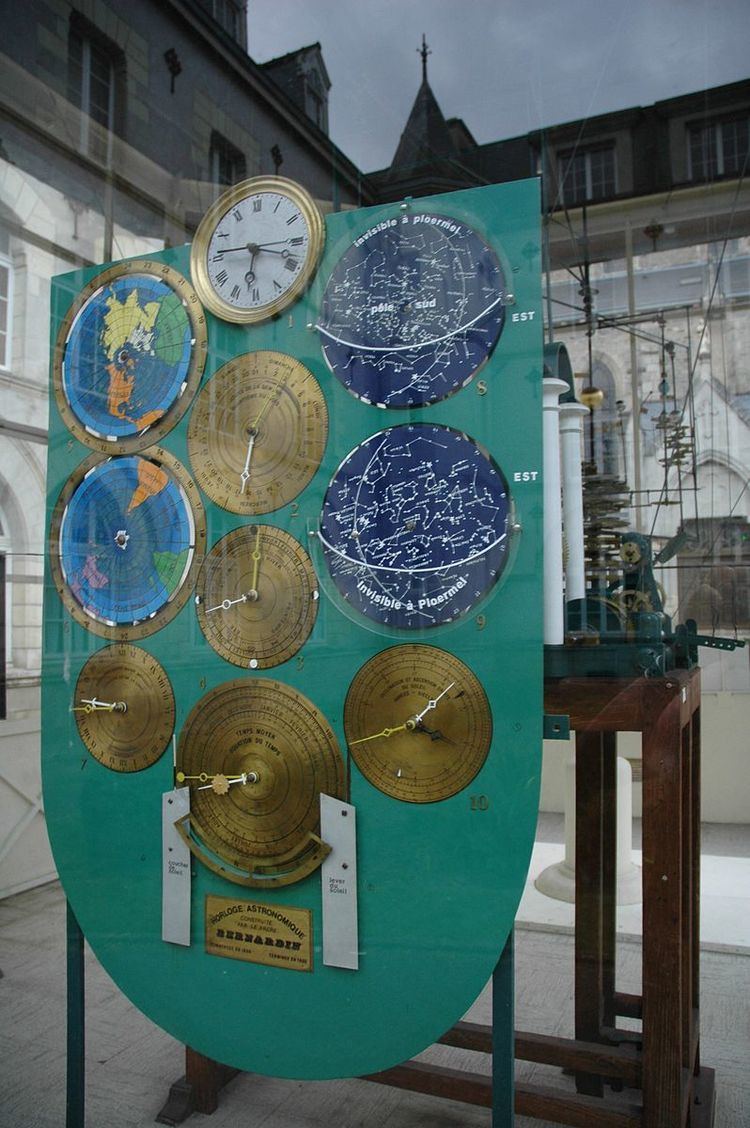Phone +33 2 97 74 06 67 | ||
 | ||
Hours Open today · 9:30AM–6PMWednesday9:30AM–6PMThursday9:30AM–6PMFriday9:30AM–6PMSaturday9:30AM–6PMSunday9:30AM–6PMMonday9:30AM–6PMTuesday9:30AM–6PMSuggest an edit People also search for Zoo and Botanical Garden of Branféré, La Croix Saint-Pierre, Les Pillons Garougnaux, North Sea | ||
The Ploërmel Astronomical Clock is a 19th-century astronomical clock in Ploërmel in Brittany, in north-west France.
Contents
History and description
The clock was built and operational by 1855. It was constructed by Brother Bernardin (1812−1876) of the Community of Brothers of The Mother House of the Brothers of Ploërmel. The clock was originally inside the monastic building it is now displayed in a kiosk in the interior court of the cloisters.
It comprises an astronomical clock and an orrery displaying all the planets known at that time. The Earth is especially well represented with its correct inclination and the moon encircling it
Astronomical Clock
The clock has ten dials which show:
Orrery
The Orrery displays the Sun, Mercury, Venus, Earth, Mars, Jupiter, Saturn and Uranus, together with the Moon, the four satellites of Jupiter and the six satellites of Saturn. It was constructed around the time of the discovery of Neptune, and before Pluto, and these two planets are not shown.
